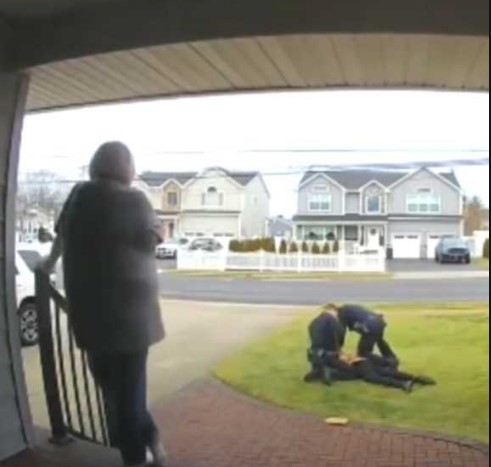
by Valerie Webster | May 11, 2022 | Blog
In their ten-week program, International Thriller Writers Organization sponsors online programs led by a master in the craft of thriller writing. Each instructor will teach some aspect of thriller creation during a two-hour Live Zoom session, will provide written materials for further reading along with study suggestions, and will offer an entire week of online Q&A with the registered students.
If you are unable to attend each week you will still be able to view the broadcasts and review questions that were asked. If you are unable to attend an entire week you will be able to review the Q&A from the other students and that week’s instructor.
2021’s instructors: Jeffrey Deaver, Lisa Gardner, Anthony Horowitz, Liv Constantine, Alexia Gordon, Adam Hamdy, Cate Holahan, Steven James, Tosca Lee, Jaime Levine, David Morrell, Samuel Octavius, Alex Segura and Jerri Williams.
Space is limited so contact Christopher Graham at ITWOnline@thrillerwriters.org to be added to the wait list. Date has not been finalized. Tuition is $495. Attendee requirements are Facebook and Zoom accounts.

by Valerie Webster | Apr 13, 2022 | Blog
Is Your Tax Info Being Sold?
Do we ever read the privacy policy statements of sites? How about terms and conditions? The answer is probably no – and that includes me. Courtesy of the Washington Post here are the reasons why we need to start.
You may use Turbo Tax or H&R Block online to file your taxes. It’s easy. It’s quick. But did you know that by clicking “agree” to some of their privacy prompts, you may be allowing sale of your personal data?
A Washington Post reader dug into the agreements after starting his taxes with one of the online tax services. After agreeing to the primary privacy agreement, the website requested permission to access personal data to “optimize your experience.”
This second permission stated: “If you agree to share your tax return details, after you file, we can provide many benefits.”
Your benefits were labeled as “personalized services” and “quicker product support.” It became clear that the tax filing software industry advanced from returns processors to profiteers of personal data.
The U.S. is skimpy on privacy laws, but it does have one that prevents tax filing companies from disclosing the contents of your tax return. For online processors, that means they can’t automatically use the contents of returns for purposes other than preparing taxes.
With this new add-on agreement, Turbo Tax and H&R Block Both companies are asking special permission to supersede federal protections and use your information, including your income, investments and mortgage details to help them upsell you on other financial products.
In addition, H&R Block wants your permission to share some of the content of your return with two independent companies in the Philippines that help them do customer service.
Clicking yes for the “personalized service” or “offers” request means you’re probably going to receive marketing from H&R Block or Intuit that’s eerily specific to your financial situation.
H&R Block stated it vets their partners, and to its knowledge they haven’t suffered from a data breach. But it can happen.
If you agreed to these requests while preparing your taxes and have now changed your mind, you can try to revoke access. But they’re going to make you jump through some hoops. For TurboTax, you have to email privacy@intuit.com. You must mention you’d like to revoke your “consent for use of tax return information.” H&R Block said customers would have to contact the company, but didn’t specify how.

by Valerie Webster | Mar 14, 2022 | Blog
Civilians and veterans of Ukraine suffer injury, displacement and the need for the basics of life. In this brief we offer ways to #StandwithUkraine and support the people, soldiers and sovereignty of the country.
To Date
- 2.5 million people have fled Ukraine since the war began
- 13 million have been impacted by Russian aggression
- 1.5 million are currently refugees in Poland
- 1,300 Ukrainian solders have died in the conflict
- 1,761 civilian casualties in the country – Office of the UN High Commissioner for Human Rights (OHCHR)
- 5 million people in total could eventually be displaced
Our donations can help ease the humanitarian crisis unfolding in Ukraine and support the efforts for the country to remain free of Russian subjugation. As we consider support, we want to ensure that our donations are properly channeled. Charity Navigator has compiled a list of responsible nonprofits engaged in relief efforts in Ukraine and the surrounding areas.
Below are more than 30 organizations that have earned trust as being financially effective and transparent.
Medical Services
UNICEF USA
International Medical Corps
Heart to Heart International
Mercy Corps
World Vision
Medical Supplies
Americares
Project C.U.R.E.
World Vision
MAP International
Heart to Heart International
UNICEF USA
MedShare
Direct Relief
Project HOPE
Operation USA
Non-Medical Supplies
Operation USA
Mercy Corps
Americares
Matthew 25: Ministries
MedShare
International Relief Teams
World Help
Project HOPE
American Jewish Joint Distribution Committee
Operation Blessing International
GlobalGiving
ActionAid USA
UNICEF USA
Save the Children
Episcopal Relief & Development
Catholic Relief Services
World Hope International
Good360
Water, Sanitation and Hygiene
Heart to Heart International
Catholic Relief Services
GlobalGiving
World Hope International
Convoy of Hope
UNICEF USA
ActionAid USA
World Help
Operation Blessing International
International Relief Teams
Water Mission
World Vision
Emergency Housing
World Vision
UNICEF USA
A Chance In Life
World Help
Islamic Relief USA
GlobalGiving
American Jewish Joint Distribution Committee
Catholic Relief Services
Other (cash/cash vouchers, logistic supply)
World Vision
American Jewish Joint Distribution Committee
Islamic Relief USA
Heart to Heart International
Church World Service
ActionAid USA
Americares
Samaritan’s Purse
UNICEF USA
Long-Term Assistance
Center for Disaster Philanthropy
Catholic Relief Services
World Help
Operation Blessing International

by Valerie Webster | Feb 9, 2022 | Blog
Another security update from valeriewebster.com to help keep you and your information safe.
What is the security issue? Companies and online sites (Facebook and Twitter, for example) place a miniscule image pixel in your emails that detect the exact time and date you open your email and report back on whether you looked at it, as well as your location and the time of day, even how many times you go back and open that message.
Those tracking emails contain an embedded line of code in the body of an email—usually in a 1×1 pixel image, so tiny it’s invisible. And it’s not just companies hoping to sell to you or predict behavior patterns. Scammers, business partners and competitors, even your spouse can employ one of the currently available email tracking software packages.
There are some 269 billion emails sent and received daily. That’s roughly 35 emails for every person on the planet, every day. Over 40 percent of those emails are tracked, according to a study published last June by OMC, an “email intelligence” company that also builds anti-tracking tools. Google trackers are present on 82% of all web traffic. Also according to OMC’s data, a full 19 percent of all “conversational” email is now tracked. That’s one in five of the emails you get from your friends.
Research from October looked at emails from newsletter and mailing list services from the 14,000 most popular websites on the web, and found that 85 percent contained trackers—and 30 percent leak your email addresses to outside corporations, without your consent.
Do the big-name email services offer any help? Gmail retired its practice of reading your emails for targeted ads in 2017. Outlook has never tracked but features like auto-filled calendar events, as well as spam and scam protection, still depend on scanning incoming mail. Because Google, Microsoft and Yahoo don’t encrypt your mail end-to-end, it’s tough to know for sure how much of it they access, privacy experts say. Unless your email provider is end-to-end encrypted, there’s nothing stopping that provider from accessing your mail.
So how do you protect yourself and your information? The following will give you some tools to upgrade your email protection.
- In Gmail on a desktop, go to Settings -> See all settings -> General -> Images. Hit “ask before displaying external images,” then scroll to the bottom and save your changes.
- If your Outlook email is a work account or if you’re using the Windows app, images are blocked by default. If you’re using a personal account on the Web, you can block some tracking pixels by going to Settings -> View all Outlook settings -> Mail -> Junk mail -> Filters. Choose to only accept attachments, images and links from people and domains in your safe senders list.
- Get a privacy protective email service. These are some of the best.
- ProtonMail, a free email service from Switzerland-based privacy company Proton, is end-to-end encrypted, which means your mail isn’t visible even to Proton itself. (And if the company gets hacked — an increasingly frequent problem in the digital world — the hackers couldn’t see your data, either.)
- Tutanotais another privacy-oriented free email service. They offer one email address and 1GB of storage for free. Tutanota is designed to strip IP addresses from the header of emails, and it can even encrypt metadata. Users can even send self-destructing emails.
- SecureMyEmail another free service works with popular services such as Yahoo, Outlook and Gmail rather than being a replacement.
- Mailfence is also free, users are permitted to get a single email address with 500 Mb of storage.
- Anti-tracking software – because “Do Not Track” is a joke.
- DuckDuckGo Privacy Essentials browser extension
- Privacy Badger browser extension
- Ghostery browser extension
- Ugly Email browser extension for Gmail
It’s easy to assume that what we send and receive in our email accounts stays private. But email is a perfect environment for tracking and big providers do little to stop it. Your information is just too valuable for trackers to ignore. They use it to boost sales. They sell it at significant prices. Forget self-regulation. It’s up to you and me maintain our own privacy.
I hope you have found this information useful. I will be posting at least one up-to-the-minute security article a month on https://bit.ly/3chtdST. Feel free to let me know what you think of these updates at valeriewebster@valeriewebster.com.

by Valerie Webster | Jan 25, 2022 | Blog
A Long Island, New York grandmother is being hailed for setting up and helping capture a suspected scammer in a trap that was all caught on video.
The 73-year-old former 911 dispatcher Jean Ebbert received an odd call this week from a man claiming to be her grandson who was in jail for DUI and needed bail.
Ebbert eventually spoke to another man on the phone who claimed to be her grandson’s lawyer and asked to come to the house to collect the bail money. He claimed he needed $8,000 to post the grandson’s bail. Jean told the man to come to the house to pick up the money but also called the police to wait for the man when he arrived.
When the man showed up at Jean’s house, she handed him an empty envelope full of paper towels before officers swarmed him in an exchange that was captured on her doorbell camera.

by Valerie Webster | Jan 14, 2022 | Blog
Partners In Crime is managing the Driven: A Rita Mars Thriller virtual tour with a month long series of reviews. You’ll get the straight skinny on the book and reader reactions. PLUS! If you sign up, you’ll have an opportunity to win a $25 Amazon gift card. Sign up now! https://bit.ly/3K4NKtu You’ll see where Rita will gets reviewed and you have a chance to participate.






